Heavy Medal Mock Newbery Finalist: FARMHOUSE by Sophie Blackall
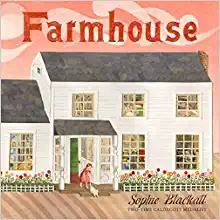
Introduction by Heavy Medal Award Committee Member Tally Klinefelter
FARMHOUSE, which occurs in a single sentence, creates a rich setting that comes to life in the found-object illustrations, combined with Blackall’s signature watercolors. The text, which rhymes periodically (but not distractingly), follows the house first from room to room and then through time, as the family that once called it home moves on and the house is left abandoned. As the book concludes, we are introduced to a new character–Blackall–as she discovers the house and creates the book itself to keep the house’s story alive.
Two-time Caldecott Medalist Sophie Blackall may have a shot at a 3rd with the layered illustrations, which zoom in on each room of the house to tell a small story. Each reread reveals more small details. (My particular favorite is the journey of the family photograph in the “short front hall.”) Blackall’s text is evocative, and, even without the accompanying illustrations, paints a picture of “a flaming cloud,” “gnarled apples,” and “wallpaper peeled like onion skins.”
ADVERTISEMENT
ADVERTISEMENT
Another strength of FARMHOUSE is the presentation of themes. We see the cycle of life, as the family and house both age. We see the space transform as we reencounter the rooms. The theme is well stated in the closing lines of the book, which will make me tear up if I think about them for too long:
In the home where twelve children were born and raised, where they ate and sleptAnd worked and played and laughed and loved and grew quite old,Where they’ll live on, now, in this book that you hold, Like your stories will, so long as they’re told.
The idea that the family, like the house, is now gone, but will live on in the telling of their stories is really powerful. We see the family grow up and out, living their childhood dreams of studying the stars and visiting the sea, and the reader is left with a sense of peace that their stories had a happy ending.
[And, hey, wouldn’t it be a really cool piece of Newbery trivia if a book that’s only one sentence long got some recognition?]
Heavy Medal Award Committee members and others are now invited to discuss this book further in the Comments section below. Please start with positive observations first; stick to positives until at least three comments have been posted or we reach 1:00 pm EST. Let the Mock Newbery discussion begin!
Filed under: Book Discussion, Heavy Medal Mock
About Emily Mroczek-Bayci
Emily Mroczek (Bayci) is a freelance children’s librarian in the Chicago suburbs. She served on the 2019 Newbery committee. You can reach her at emilyrmroczek@gmail.com.
ADVERTISEMENT
ADVERTISEMENT
SLJ Blog Network
Notes on April 2024
Lifetime Achievement Awards and Upcoming Books: A Talk with Christopher Paul Curtis
Review| Agents of S.U.I.T. 2
Navigating the High School and Academic Library Policy Landscape Around Dual Enrollment Students
Book Review: The Kids in Mrs. Z’s Class books 1 and 2
ADVERTISEMENT



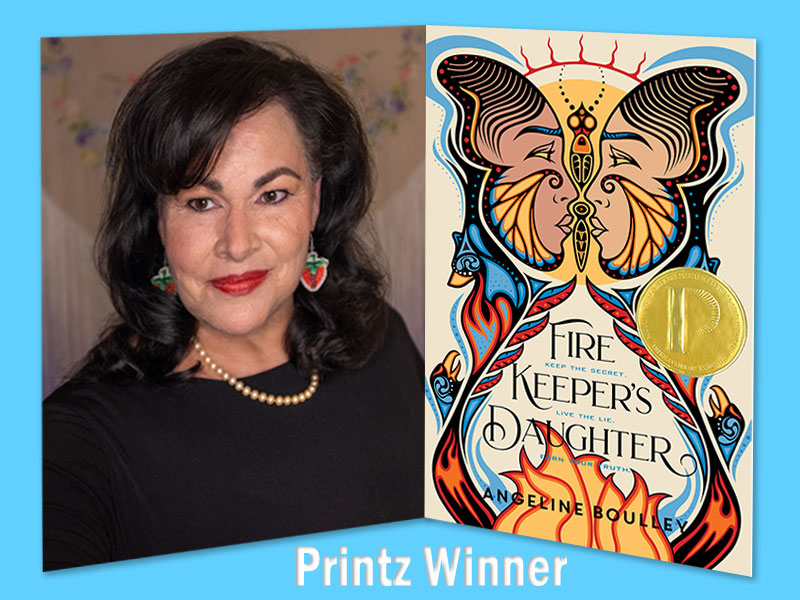
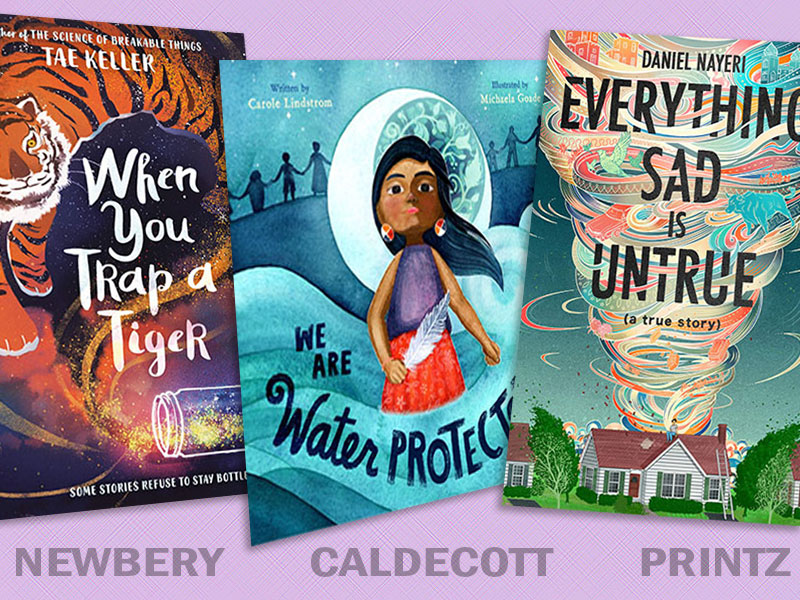
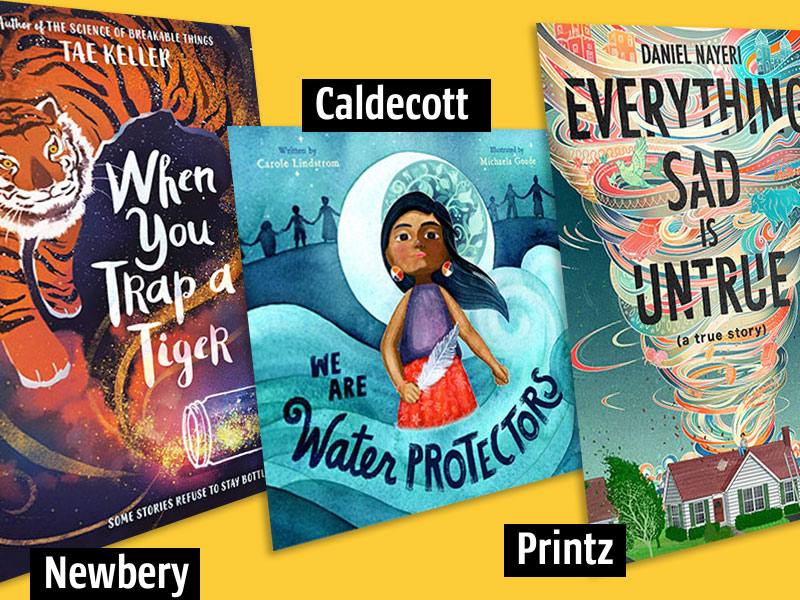
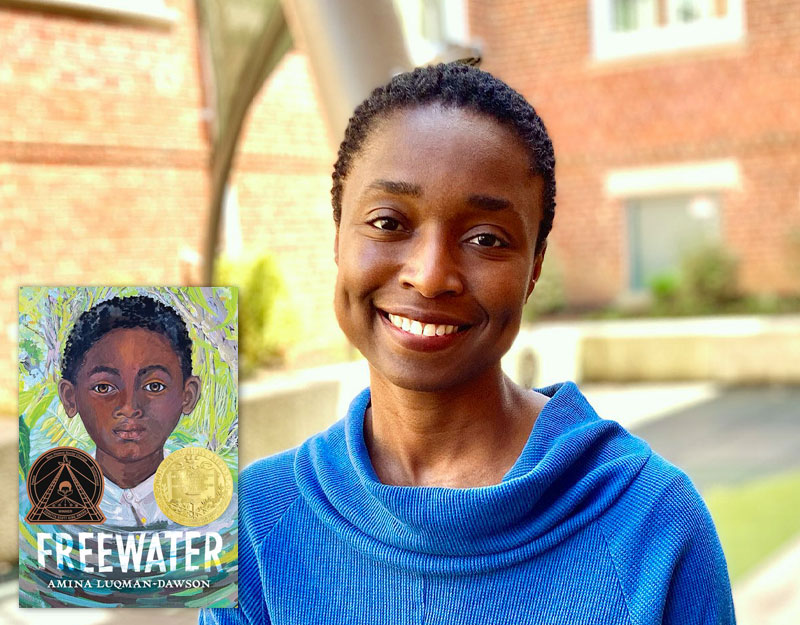
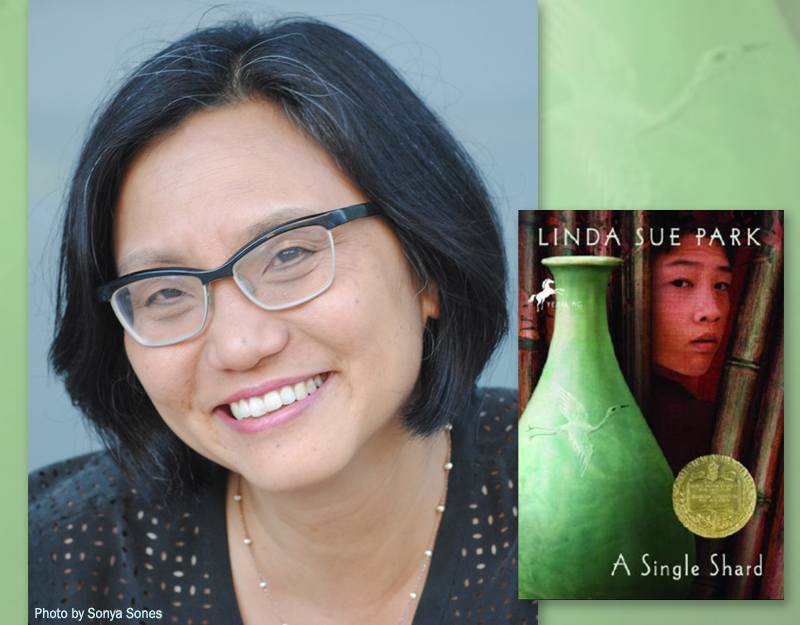
Great introduction Tally! It did not register that this whole book was just one sentence! This book Farmhouse offers a peek into what farm life was like for the Swantak family. The theme of simplicity is woven through expertly in the book where children could wander independently, fish and pick apples, and large families were not an odd occurrence. It is reminiscent of an era gone by. Just like the crumbling house, it sadly reminds me that this time in history is gone and family life has inextricably changed. Using illustrations and facial expressions, Sophie Blackall conveys each child and their interests but due to the format, there is not the ability to give characters depth as one might see in a chapter book.
Thanks for the wonderful introduction Tally. FARMHOUSE shines when it comes to Interpretation of Theme. it made me think about how people attach emotionally to the physical structures that they have lived their lives in and how time takes its toll and we have to wrestle with what that means.
The words choked me up with emotions and memories of days gone-by. I could hear the giggling, laughing, squabbles and grumblings of the siblings, the scolding, forgiving, direction-giving of the adults and the creaks and moans of the stairs, floors and walls of a busy farm house. I read the text aloud several times to get the rhythm of this one long run-on sentence book. After doing that, I realized It was carefully constructed with rhyme and then a phrase that didn’t rhyme, which gave a pause to think, before the next rhyming part began. The entire sentence was carefully metered and brought life and honor to the family that lived there.
I loved the back story of how this book came to be. I marveled at how Blackall repurposed bits of the house in her illustrations to restore the family and their lives in this book. It really showed the importance of storytelling and sharing memories with the next generation.
“I realized It was carefully constructed with rhyme and then a phrase that didn’t rhyme, which gave a pause to think, before the next rhyming part began. The entire sentence was carefully metered and brought life and honor to the family that lived there.”
I couldn’t agree with this comment more, Rox Anne. Very well said!
I wish I could contribute more to the discussion of this book, because Blackall is a perennial favorite of mine. (I give FINDING WINNIE to everyone). But I am STILL on hold for this book and have yet to have it in my hands. This one strikes me more, based on your intro Talley, along the lines of HELLO LIGHTHOUSE. The evocative illustrations and the emotions they conjure up!
With both FINDING WINNIE and FARMHOUSE, it’s really the backstory that gives you an appreciation for the book. Imagine reading FARMHOUSE without the back matter. It would be beautiful, but much less impactful.
This is definitely closer to HELLO LIGHTHOUSE than FINDING WINNIE. My students may be in the minority, but the kids I read LIGHTHOUSE to during Mock Caldecott years ago (while they were in Kindergarten) still talk about how much they love it.
I was about 25 people back on my library hold list, too. I ended up having to buy it, because I knew I’d want to use it for Mock Caldecott in addition to this. I highly recommend watching the book trailer to get a good sense of the overall emotions. It’s really beautiful.
As stated by people above there is a lot of power packed into one sentence- the level of description, the intensity of themes (family, growing, learning) and the depiction of time is doen overwhelmingly well making this a very successful Newbery possible picture book.
I’m still just amazed it’s one sentence. I’m so impressed!
Of course the illustrations are amazing – Sophie Blackall!! — but what struck me on a second read-through is that you don’t really need them. The text tells a complete story with vivid descriptions that immediately spark the imagination. I especially loved the description of the children’s bedroom, “…where they kept collections of tin toy cars and feathers and bones and movie stars, where they hung prize ribbons for champion cows that lived in the barn behind the house…” (p. 11)
Agreed! I had my husband listen to the words without showing him the pictures first, and he said it was very vivid. I showed him the book after, and it was very similar to what he was picturing as I read. I’ve also read it about a dozen times, faced out, to classes, so I can’t really see the pictures, and it holds up.
I loved the simplicity of “Farmhouse” – and how it details life on the farm through the eyes of the family. There are so many images that I think parents reading this story can resonate with. The image of the mom multitasking – cooking while holding the baby, marking how tall they’ve grown, etc. I loved the image of the family getting together and praying before dinner — with no TV in sight!
I also loved that “Farmhouse” not only honors the family, but the home that supported them and their growth. With the interior and exterior of the house – it’s as almost as if the house is a person. At the beginning, the outside of the house is pristine. After the youngest child (as an adult) returns to visit the house and leaves, we see the beams trying to support the front of the house. “And the house gave a sigh and slumped on the stones, a slight lean in its beams and its bones..” Just beautiful.
I thought about this book in two ways—through the delineation of setting, which is clearly the star here, and its prose style of long sentences in comparison to Ain’t Burned All the Bright. This was a really ambitious project for Blackall, and the author’s note captures that. The long-sentences are very evocative–as we see with Reynolds work–and also control and move the book in unique ways. This would have been a very different book if it had more punctuation.
That being said, while it’s an ambitious piece and I love it as a girl-who-loves-projects, I don’t know that this stands out to me as children’s LITERATURE. As a children’s piece, maybe, but for the literature alone, I am unsure. It also feels very catered to adults reading kids books rather than real children.
I agree. I’m surprised at the number of bloggers who have read it to classes who loved it. It struck me as a book that grownups think kids will love. Kids are yelling by the time I get to the end of FINDING WINNIE – the big reveal is so awesome. I tell them nothing ahead of time just to watch them figure it out. I haven’t had a chance to read FARMHOUSE to any classes but I certainly will. But it feels like I’m going to have to prep them first, so we’re back to the back matter issue that we’ve talked about before. Should we be considering it? Shouldn’t a picture book stand on its own?
These are both excellent points. I can see how adults would love it (and obviously many of us do!), but the appeal to children is different. Add in the necessity of the back matter and I’m not sure I would choose it.
For a long time this fall I back-burnered Farmhouse because it felt like a piece of nostalgia for readers like me. I have always loved old things and objects with history so it’s exactly my kind of book. But I thought it would not resonate at all with young readers. However I think I forgot how much I loved old things when I was a young reader myself. Today I read this to a group of third graders as part of my Caldecott Club and they were absolutely riveted and in love with the idea of repurposing objects from the old house into illustrations so that the old house lives on in the story. The theme that Tally so deftly illuminated in her introduction came clearly through to my third graders. They were deeply moved by the idea that people (and houses) live on when their stories are told. So I confess to selling this book short upon my first read. Some children are just as nostalgic and intrigued by old objects as I am–and in truth–my affection for such history has been part of my soul since I was a child myself.
There has been some discussion about how well the book appeals to younger readers. I have now read this to multiple 1-5 classes, and the response has been overwhelmingly positive. While I imagine most of my students aren’t picking up on a lot of the nuance, they love looking for all of the details in the illustration, and they thought it was cool that it’s a single sentence. However, I prepped the students for the book by showing its creation via the book trailer: https://www.youtube.com/watch?v=W5OSHXIm3Lk&ab_channel=Little%2CBrownYoungReaders which does show that the book has a harder time standing alone.
I loved this book, but on all of my readings so far, it’s been the art that blows me away; the sentence that meanders and guides the reader through the book takes a back seat, although of course it’s wonderful. I’m going to have to read it again and cover up the art as I go so I can focus more on the words. I also loved the back matter, which really enriches the book – but I agree with others who have said this seems like a book pitched for adults. Then again, those in the comments who have read it to their classes have gotten positive responses. I might slot it into my Mock Caldecott program later this month and see how it goes!
“[And, hey, wouldn’t it be a really cool piece of Newbery trivia if a book that’s only one sentence long got some recognition?]” -Tally. Yes! Although a three-sentence book (AIN’T BURNED ALL THE BRIGHT) would also make for good trivia.
I loved this book. I am planning to read it again more closely soon, to linger over the pictures and catch what I missed before.
I bought the book for the pictures, because I found the elevated scrapbook-style art so compelling–but the text just blew me away. I wasn’t expecting that at all. I had assumed the text would be more of an afterthought, but it was fabulous. I read books to be captivated and astonished by delicious prose, and that’s what Blackall delivered in this story. The final words truly brought tears to my eyes.
For me, I feel like there is a lot here for children at both ends of the age spectrum. Younger readers will likely gravitate toward the complex art and the story of the children growing up. Older readers–even young teens, as I know there are teens who enjoy picture books too–will probably pick up on more of that subtle nuance that Tally mentioned. And for me, that is one mark of a successful Newbery book, that it can be enjoyed by the full target age range of the award.
I hope that this title won’t be overlooked just because Blackall has already won two Caldecotts! It is a true standout.
I have to agree with most everyone this is a wonderful book both in text and illistration. I was espesaly eager to read this as Hello Lighthouse is my favorite picture book and I’d heard it’s similar. I have to say this book didn’t disappoint. What I like about booth Farmhouse and Hello Lighthouse is that Sophie Blackall is able to draw you in and really give you a sense of the place and the people who live there. You feel a connection as if your right there with them. I think this is one special picture book that can transcend generations. I think there is stuff for young kids and adults to enjoy.
What stood out to me is the way that this book feels timeless, which is so interesting because it is a book that is essentially about the passage of time. The sense of place is beautifully written and draws the reader in. I agree with others that while the illustrations are gorgeous, the story itself stands on its own.
Well said, Maura. It was the back matter that gave me such pause and has caused repeated readings.
This posted weirdly. I meant to post this as a reply to Maura’s comment on the back matter.
After reading the posts here it is evident I need to revisit the text on this one. Of course I was enamored with the illustrations and even more when I read the back matter and how this story (and the illustrations) came to be. I was less taken with the text, in fact, I found the meandering nature of the text less a bit hard for me to stay engaged with. This might be just a preference and it really appears that many of you have found the rhythm in this text that I felt was a bit lacking. I think my next read will just be of the text so that I can just focus on that element alone. Has anyone used this kids? I am curious about student response, as I also wondered if this was the kind of children’s book that was more appreciated by adults.
I finally had an opportunity to revisit this text and really focus on the text itself. In my first read, this fall, I really dismissed the text and focused on the illustrations. I have to say, stripped of the illustrations, this text really does stand alone. The combination of intentional line breaks, repetition, page turns and rhyming creates this gentle rhythm. I think has a great deal to do with why this book feels timeless. There is also a real sense of reverence that it creates, put special emphasis on the importance of storytelling. I especially found use of line breaks to be quite effective at controlling the pacing and the rhythm of this story. Thanks all, for bringing me to this book, and really forcing me to look more critically at the text itself.